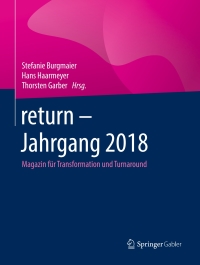


# Que Lunner Planet Light First (PLF), a producer of energy-efficient light bulbs, expects that demand will increase markedly over the next decade. Due to the high fixed costs involved in the business, PLF has decided to evaluate its financial performance using absorption costing income. The production-volume variance is written off to cost of goods sold. The variable cost of production is $2.60 per bulb. Fixed manufacturing costs are $1,170,000 per year. Variable and fixed selling and administrative expenses are $0.30 per bulb sold and $250,000, respectively. Because ils light bulbs are currently popular with environmentally conscious customers, PLF can sell the bulbs for $9.10 each. PLF is deciding among various concepts of capacity for calculating the cost of each unit produced. Its choices are as follows: (Click the icon to view the capacity information.) Read the requirements. Requirement 1. Calculate the inventoriable cost per unit using each level of capacity to compute fixed manufacturing cost per unit. Begin by determining the formula to calculate the inventoriable cost per unit. (Abbreviations used: mfg - Manufacturing, admin. - administration) i Data Table Now calculate the inventoriable cost per unit at each level of capacity Inventorlable cost per unit Capacity type Theoretical Practical Theoretical capacity Practical capacity Normal capacity Master-budget capacity 900,000 bulbs 520,000 bulbs 260,000 bulbs (average expected output for the next three years) 225,000 bulbs expected production this year Normal Master Budget Print Done Requirement 2. Suppose PLF actually produces 300,000 bulbs. Calc Head allocation rate. Determine the formula that is used to calculate the production-volume variance. (Abbreviation used: mig manufacturing.) Production-volume variance Next calculate the production-volume variance at each level of capacity. Label each variance as favorable (F) or unfavorable (U). Production Choose from any list or enter any number in the input fields and then continue to the next question UeSUll llop Planet Light First (PLF), a producer of energy-efficient light bulbs, expects that demand will increase markedly over the next decade. Due to the high fixed costs involved in the business, PLF has decided to evaluate its financial performance using absorption costing income. The production-volume variance is written off to cost of goods sold. The variable cost of production is $2.60 per bulb. Fixed manufacturing costs are $1,170,000 per year. Variable and fixed selling and administrative expenses are $0.30 per bulb sold and $250,000, respectively. Because its light bulbs are currently popular with environmentally conscious customers, PLF can sell the bulbs for $9.10 each. PLF is deciding among various concepts of capacity for calculating the cost of each unit produced. Its choices are as follows: Click the icon to view the capacity information.) Read the requirements Requirement 1. Calculate the inventoriable cost per unit using each level of capacity to compute fixed manufacturing cost per unit. Begin by determining the formula to calculate the inventoriable cost per unit. (Abbreviations used: mfg = manufacturing, admin. = administration.) = Inventoriable cost per unit Now calculate the inventoriable cost per unit at each level of capacity Inventoriable cost per unit Capacity type Theoretical Practical Normal Master Budget Requirement 2. Suppose PLF actually produces 300,000 bulbs. Calculate the production-volume variance using each level of capacity to compute the fixed manufacturing overhead allocation rate. Determine the fomula that is used to calculate the production-volume varlance. (Abbreviation used: mfg = manufacturing.) Production-volume variance Next calculate the production-volume variance at each level of capacity. Label each variance as favorable (F) or unfavorable (U). Production Choose from any list or enter any number in the input fields and then continue to the next question. Planet Light First (PLF), a producer of energy-efficient light bulbs, expects that demand will increase markedly over the next decade. Due to the high fixed costs involved in the business, PLF has decided to evaluate its financial performance using absorption costing income. The production-volume variance is written off to cost of goods sold. The variable cost of production is $2.60 per bulb. Fixed manufacturing costs are $1,170,000 per year. Variable and fixed selling and administrative expenses are $0.30 per bulb sold and $250,000, respectively. Because its light bulbs are currently popular with environmentally conscious customers, PLF can sell the bulbs for $9.10 each. PLF is deciding among various concepts of capacity for calculating the cost of each unit produced. Its choices are as follows: Click the icon to view the capacity information.) Read the requirements. Next calculate the production-volume variance at each level of capacity. Label each variance as favorable (F) or unfavorable (U). Production volume-variance Capacity type Theoretical Practical Normal Master-Budget Requirement 3. Assume PLF has no beginning inventory. If this year's actual sales are 225,000 bulbs, calculate operating income for PLF using each type of capacity to compute fixed manufacturing cost per unit. Calculate the operating income for each type of capacity. We will do the operating income calculations one at a time, beginning with theoretical. Label each variance as favorable (F) or unfavorable (U). Theoretical Practical Normal Master budget Revenue Less: Cost of goods sold Production-volume variance Gross margin Variable selling Fixed selling Operating income Choose from any list or enter any number in the input fields and then continue to the next question. Save for Later









